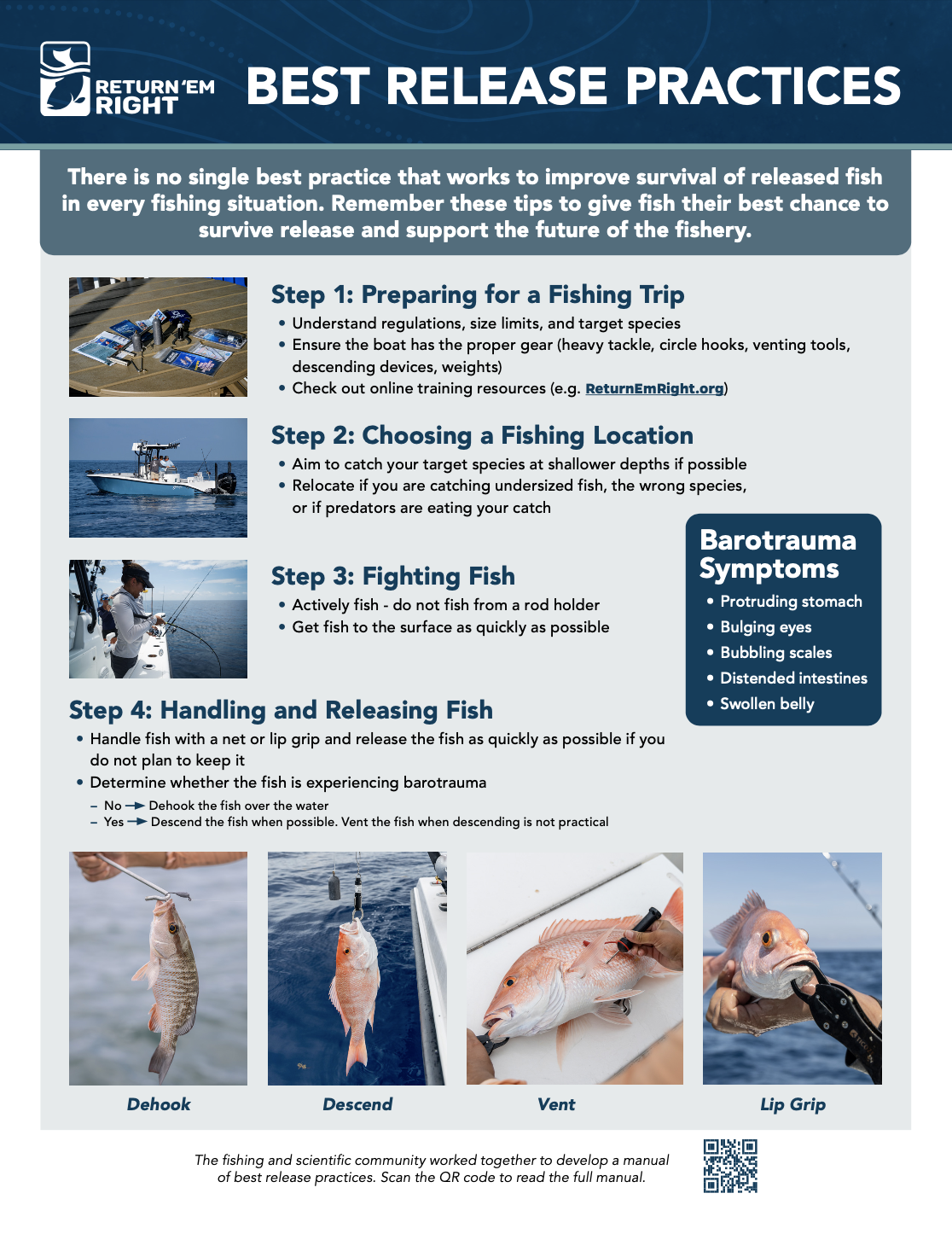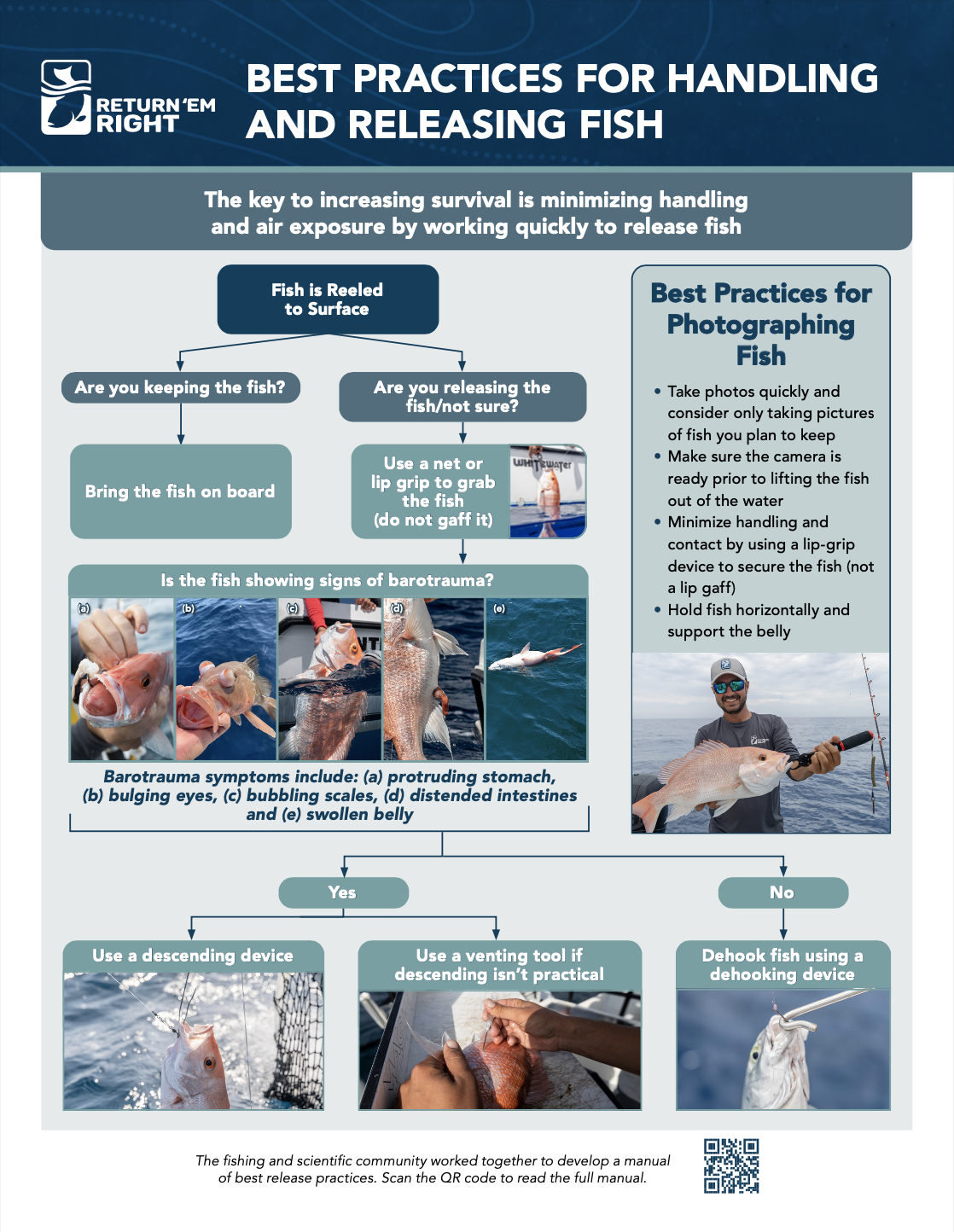Best
Practices
Best Release Practices
For Reef Fish & Related Species
Fishing techniques and conditions vary across the region, and anglers control the choices they make on fishing trips. Return ‘Em Right hosted a workshop to identify best practices related to different aspects of a fishing trip, such as preparing for it, selecting a fishing location, effectively handling and releasing fish and dealing with encounters with predators. Access the Return ‘Em Right Best Release Practices Manual and Fact Sheets below. These materials provide detailed guidelines on making informed decisions at every stage of a fishing trip.
For mobile users: click the dots to view the second page of this fact sheet.
Tips and Tricks
For Your Next Fishing Trip
Plan Ahead
-
Know your target species, fishing depth, catch method, and current season/size/bag limits.
Gear Up
-
Bring dehookers, venting tools, descending devices, weights.
-
Use strong, fish-friendly tackle.
On the Water
- Be ready to release fish before bringing them to the surface.
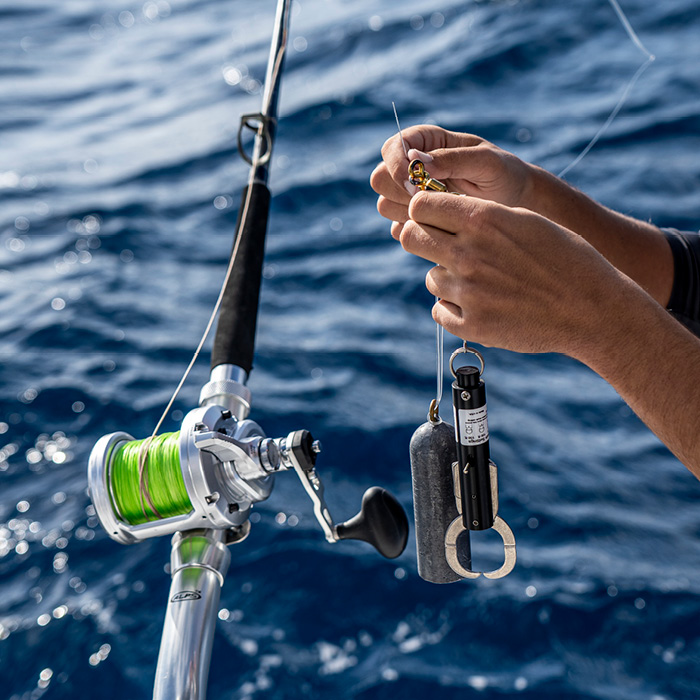
Why It Matters
-
Long fights cause lactic acid buildup and lower survival.
-
Light gear increases predation and deaths.
-
Breakoffs leave harmful gear behind.
What to Do
-
Use strong rods, reels, and tackle to land fish fast.
- Choose non-stainless, non-offset circle hooks; cut line if gut hooked.
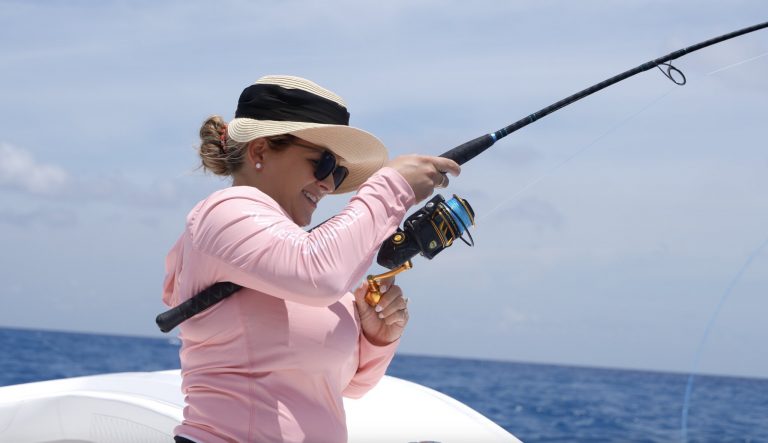
Why It Matters
-
Fighting drains energy and oxygen; fish need water flow over gills to recover.
What to Do
-
Keep fish out of the water only as long as you can hold your breath.
-
Quickly dehook and release fish not showing signs of barotrauma.
-
If gut hooked, cut the line and return the fish to water quickly.
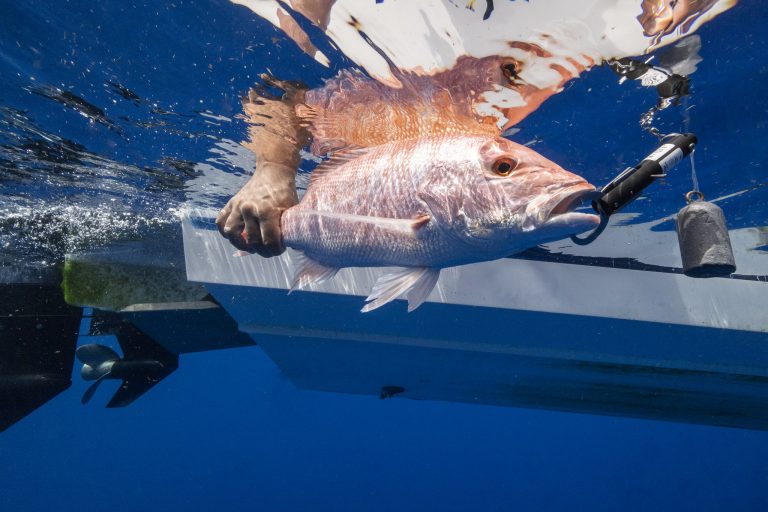
Why It Matters
-
When predators (sharks, dolphins, goliath groupers, etc.) take hooked or descended fish, it can result in the frustrating and costly experience of lost catch and gear.
What to Do
-
Move spots often before predators move in.
-
Use heavy tackle to land fish fast.
-
Rig descending devices with steel leader to reduce gear loss.
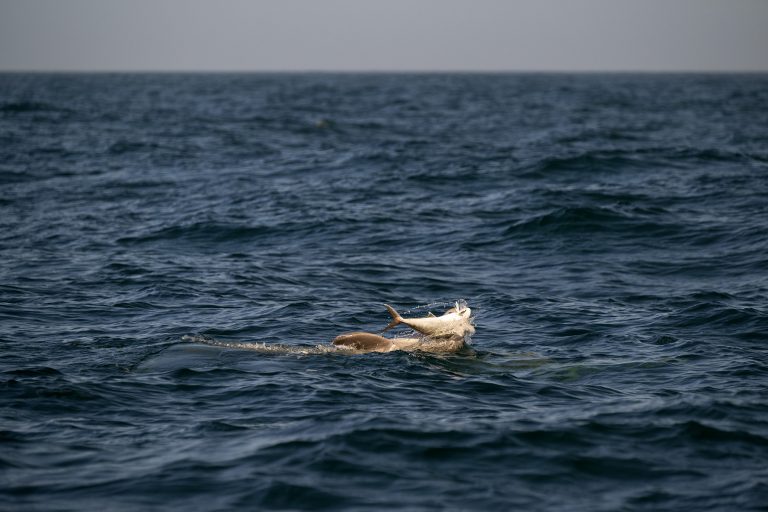
Click the button below to read Read Return ‘Em Right’s blog on handling predators such as dolphins and sharks.
Why It Matters
-
Rough handling or removing slime can increase injury and disease risk.
What to Do
-
Have your camera ready before lifting a fish out of the water.
-
Hold horizontally to support their weight while avoiding gills.
-
Use wet gloves or a damp rag to protect the slime coat.
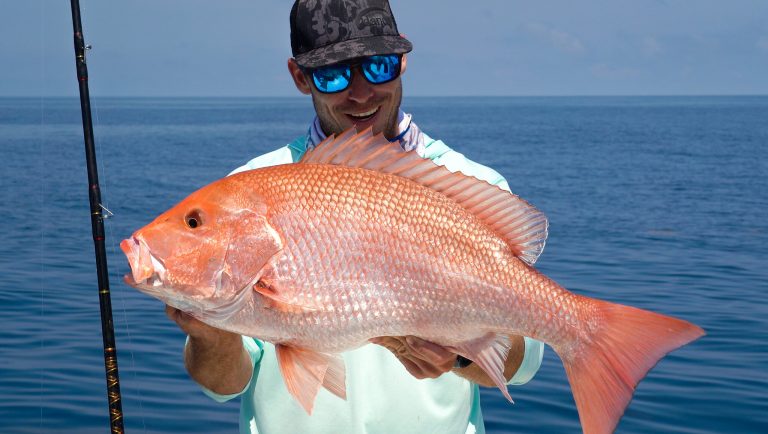
Click the button below to read Return ‘Em Right’s blog on how to safely photograph fish.
